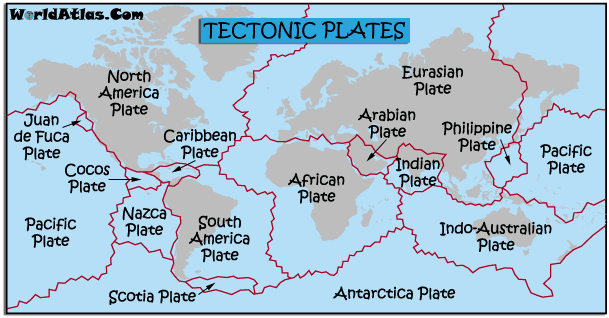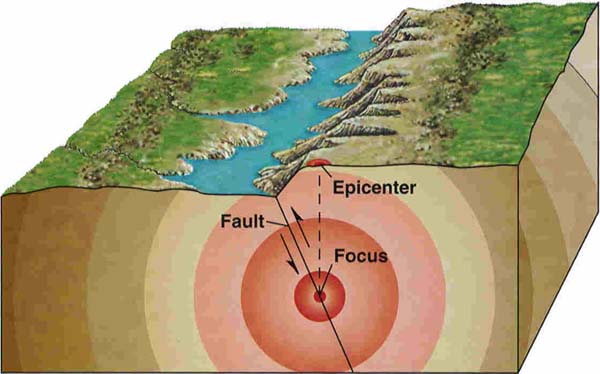 |
| This is a Rector Scale |
Rector Scale: A way of measuring the magnitude of an earthquake. Or how much energy is released when there is tension.
| This is a Seismograph |
Seismograph: an instrument for recording the movement on the earth’s surface.
 |
| This is a Seismometer |
Seismometer: This is the measurement of shaking (up and down) and back and forth.
 |
| This is an example of a Seismic wave. |
Seismic waves: Seismic waves are waves of force that travel through the Earth or other elastic bodies, for example as a result of an earthquake, explosion, or some other process that imparts forces.
 |
| Tectonic Plates |
Tectonic Plates: Flexible plate, floating over molten lava. Like pieces of a gigantic jigsaw puzzle, Earth's crust is broken into tectonic plates that move. Their slow yet rough-and-tumble jostling causes earthquakes and volcanoes, and forges mountains, valleys, seamounts and deep-sea trenches.
 |
| This is an example of a Epicenter |
Epicenter: The center of the earthquake. It is the point where the stress breaks free, it then radiates like a ripple through the earth (seismic waves) creating different types of natural disasters.
 |
| This is an example of a Fault |
Fault: It is the border of where the tectonic plates piece together (Where they connect).
There are thousands of earthquakes every year. The tectonic plates go up and down creating energy. When the tectonic plates come together they can create mountains. When plates slip, earthquakes, lava make a party! The hot molecules need more space, magma is extremely hot. This is when it bubbles up and sprits out, because it has nowhere else to go.
To make islands, sometimes the hot magma goes into the ocean and creates a hard rock, eventually becoming an island. Also there are underwater volcanoes which over time build up hard magma, and create an island.
The earth and magma underneath can be compared to liquid chocolate hardening. When it is somewhat dry, it creates a hard top layer. Still the magma or chocolate underneath is not dry, so when you tilt the chocolate bowl the liquid chocolate or magma moves the top layer of dried chocolate. When the magma tilts towards the ocean, the molten magma moves the surface of the earth while moving.
Scientists can track where an earthquake is happening with two tools, the seismograph and seismometer. Each country has one of these stations so when someone from India can feel and earthquake, someone from Indonesia can feel the earthquake and someone from Cape Town, South Africa can feel the earthquake. The scientists connect the dots and find out where the epicenter is. Finding the epicenter is very important. The epicenter is where natural disasters come from.
No comments:
Post a Comment